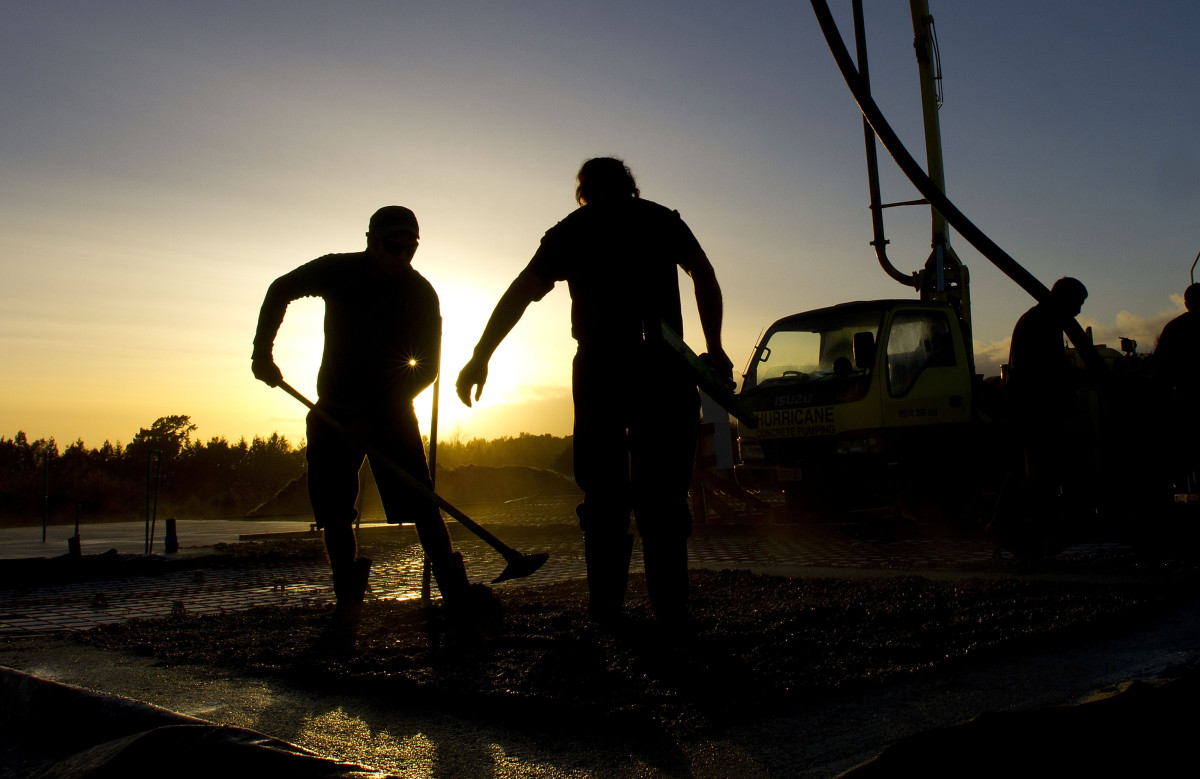Protect your concrete from a winter cold
26 May 2015, Prove Your Know How, Technical

This article, the first in a two-part series, looks at how to overcome some of the challenges cold weather presents to concreters
We are fortunate in New Zealand to live in a moderate climate, which means we can build through most of the year. However, morning frosts during winter are common in many places (although they’re usually followed by a sunny day).
So, with winter upon us, it’s worth refreshing our memories about some of the issues associated with winter concreting. NZS 3109 Concrete Construction provides a definition of unfavourable cold conditions when concrete shall not be placed. These are:
- When the ground is frozen.
- At temperatures below 5°C, with temperature descending.
- At temperatures below 2°C, with temperature ascending.
Why the temperature limits?
Let’s consider what happens to concrete at 0°C. If concrete is frozen before it sets, the hydration of the cement is suspended – partly because the water within the mix freezes and expands, preventing the reaction from continuing. If the temperature is raised and the concrete vibrated to remove pores created by ice, hydration should continue, which will produce satisfactory concrete.
This only remains true if the concrete is re-vibrated after the ice has thawed. However, if the concrete has set, but not reached sufficient strength, freezing can result in internal cracking and loss of strength. If the freezing only occurs on the surface, it may result in delamination. After concrete has attained strength of approximately 3.5 MPa, it is usually considered strong enough to resist a freeze-thaw cycle.
The requirements of NZS 3109 are there to give some protection against the potential freezing of concrete before it has attained sufficient strength.
“If concrete is frozen before it sets, the hydration of the cement is suspended
How do I ensure a fit-for-purpose project in the winter?
The best solution is to understand the fundamental principles of concreting in the cold, so that the most appropriate solution can be applied to your project. The following are some general comments that are worth considering:
Never place concrete on frozen ground. In New Zealand, it should be possible to wait until the ground temperature rises. Alternatively, the ground can be protected overnight with straw or a similar material to prevent freezing.
Use air-entrained concrete. The advantage of air entrainment is that it gives the concrete superior freeze/thaw resistance when it has reached sufficient strength. The concrete will still need to be protected from freezing until it reaches at least 3.5 MPa.
Consider the use of set accelerators, and/or HE cement. These will decrease the time to final set, meaning the concrete can be finished and potentially protected earlier. When the concrete is reinforced, it is recommended that non-chloride accelerators are used.
Be aware that accelerators have limited effectiveness when mix temperatures are below 5-8°C. Also, be aware that overdosing with some set accelerators can in fact retard set, so ensure that the dose rate is that recommended by the manufacturer.
There is a tendency in some areas to add set accelerators simply because it is winter, rather than based on the expected temperatures during placing and finishing. We can get very warm, low-humidity days in winter. The indiscriminate use of accelerators can lead to problems with premature setting or plastic cracking.
“Understand the fundamental principles of concreting in the cold, so that the most appropriate solution can be applied to your project
Protect the freshly placed concrete. In winter, there can be large changes in ambient day and night temperatures. This can lead to restrained early thermal contraction. The use of early entry saw cuts, or tooled joints, can prevent the formation of ugly random cracking.
Some cracking observed in winter suggests that the top surface had chilled relative to the body of the concrete, resulting in random surface cracking. Although the insulation value of polythene is negligible, covering with polythene can minimise the wind chill effect and prevent this type of cracking. If freezing conditions are expected, and the concrete is unlikely to have attained a strength of 3.5 MPa, use insulation.
Prevent thermal shock. If temperatures are cold and the concrete is warm, there is a risk that the removal of formwork can result in surface cracking. A temperature differential of 20°C or more is commonly quoted as the temperature differential at which this phenomenon can occur. Always follow the minimum formwork stripping times specified in NZS 3109.
Use warm materials to make the concrete. The use of hot water and aggregates that have been stored in bins can elevate concrete mix temperatures, resulting in a faster setting time. Talk to your local ready-mixed concrete supplier for options that are practical in your area. Never use water above 70°C, and be aware of the safety requirements of using hot water on a construction site.
Do not use unventilated heaters. The CO2 given off by some heaters can react with the concrete surface, producing a dusty, weak surface. Always make sure the exhaust gases are ventilated, and do not aim the burner directly at the concrete. With some simple precautions, it is relatively easy to obtain high-quality concrete all year round.
More information
The New Zealand Master Concrete Placers Association (NZMCPA) provides its members leadership, advocacy, professional development, promotion and partnering. To find out more visit www.mcpa.org.nz.
Register to earn LBP Points Sign in



